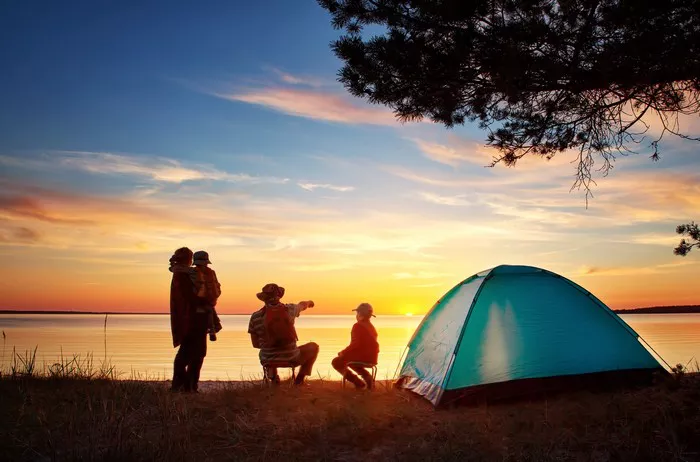Camping is a delightful way to escape the hustle and bustle of everyday life and immerse yourself in nature. Whether you’re a seasoned outdoor enthusiast or a first-time camper, proper preparation is key to ensuring a safe and enjoyable trip. Having a thorough camping checklist can make all the difference between a relaxing getaway and a stressful experience. Here’s a detailed guide on what to pack for your next camping adventure.
Shelter and Sleeping Essentials
1. Tent: Choose a tent that suits your needs, considering size, weather resistance, and ease of setup. Don’t forget stakes, guylines, and a ground tarp for added protection.
2. Sleeping Bags: Opt for sleeping bags appropriate for the expected temperature. Consider liners for extra warmth and comfort.
3. Sleeping Pads or Air Mattresses: Provide insulation and cushioning from the ground. Opt for self-inflating pads or lightweight air mattresses for comfort.
4. Pillows and Blankets: Bring pillows or compressible travel pillows for added comfort. Lightweight blankets can also be useful for chilly nights.
Cooking and Eating Supplies
1. Camp Stove and Fuel: Choose a portable stove with fuel suitable for your cooking needs. Don’t forget extra fuel canisters if you plan to cook multiple meals.
2. Cookware and Utensils: Pack a lightweight camping cookware set that includes pots, pans, a kettle, and utensils like a spatula, tongs, and a can opener.
3. Cooler and Ice Packs: Keep perishable food items fresh with a cooler and ice packs. Opt for a cooler that fits your food storage needs.
4. Food and Snacks: Plan meals ahead and pack non-perishable food items like canned goods, pasta, rice, and snacks. Don’t forget essentials like salt, pepper, and cooking oil.
5. Water Containers: Carry enough water for drinking and cooking. Consider collapsible water containers for easy storage when empty.
Clothing and Personal Items
1. Layered Clothing: Pack clothing suitable for various weather conditions, including moisture-wicking base layers, insulating mid-layers, and a waterproof outer shell.
2. Sturdy Footwear: Choose comfortable hiking boots or shoes that provide support and protection on different terrains.
3. Rain Gear: Bring a waterproof jacket and pants to stay dry during unexpected showers.
4. Hat, Sunglasses, and Sunscreen: Protect yourself from the sun with a wide-brimmed hat, UV-blocking sunglasses, and sunscreen.
5. Personal Hygiene: Bring toiletries such as toothbrush, toothpaste, soap, and hand sanitizer. Don’t forget toilet paper and a trowel for digging a cat hole for waste disposal.
6. Towels and Washcloths: Carry quick-drying towels and washcloths for personal hygiene.
Safety and Navigation Gear
1. First Aid Kit: Include essential items like bandages, antiseptic wipes, pain relievers, and any necessary medications.
2. Navigation Tools: Carry a map, compass, or GPS device to help navigate trails and unfamiliar terrain.
3. Multi-tool or Knife: A multi-tool or camping knife can be invaluable for various tasks around the campsite.
4. Flashlights or Headlamps: Ensure you have reliable lighting for nighttime activities. Don’t forget extra batteries or a portable charger.
5. Multi-tool or Knife: Keep a multi-tool or camping knife for various tasks like cutting, opening cans, and repairing gear.
6. Emergency Contact Information: Write down emergency contacts and relevant information in case of unforeseen circumstances.
Miscellaneous Essentials
1. Camp Chairs or Hammock: Bring portable seating options for relaxing around the campsite.
2. Entertainment: Pack books, playing cards, or a portable speaker for leisure time at camp.
3. Trash Bags: Carry sturdy trash bags for waste disposal and leave-no-trace camping.
4. Fire Starters: Include waterproof matches, lighters, or a fire starter kit for campfires.
Optional Items
1. Camera: Capture memories of your camping trip with a camera or smartphone.
2. Binoculars: Enjoy wildlife watching and scenic views with a pair of binoculars.
3. Repair Kit: Carry duct tape, sewing kit, and patch materials for quick gear repairs.
4. Insect Repellent: Protect against mosquitoes and other insects with repellent sprays or lotions.
Additional Considerations
- Permits and Reservations: Research and secure any necessary permits or campground reservations ahead of time.
- Weather Forecast: Check the weather forecast for your camping destination to prepare accordingly.
- Leave No Trace Principles: Practice Leave No Trace principles by minimizing impact on the environment and respecting wildlife.
Conclusion
By using this comprehensive camping checklist, you can ensure that you have all the essentials for a successful outdoor adventure. Customize the list based on the specific needs of your trip and the duration of your stay. Remember to respect the environment by practicing leave-no-trace principles and following local camping regulations. With the right preparation, you’ll be ready to enjoy the great outdoors and create lasting memories on your camping excursion. Happy camping!

